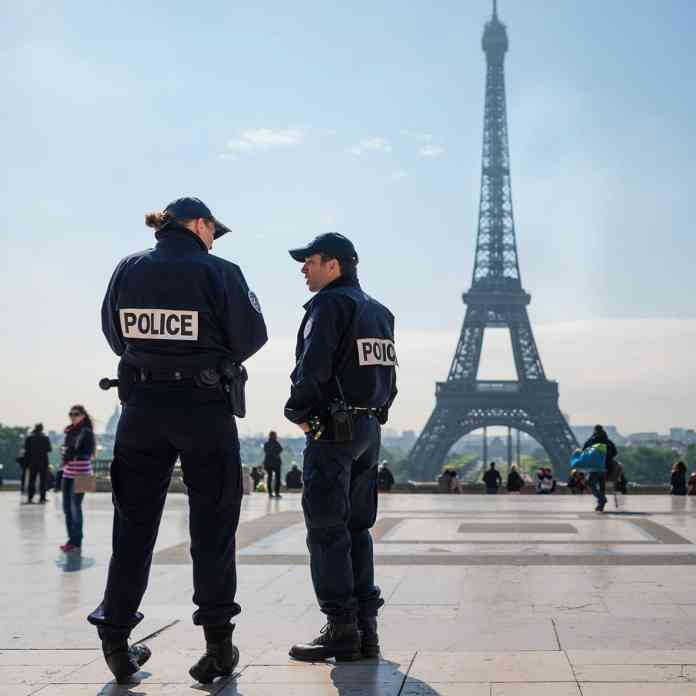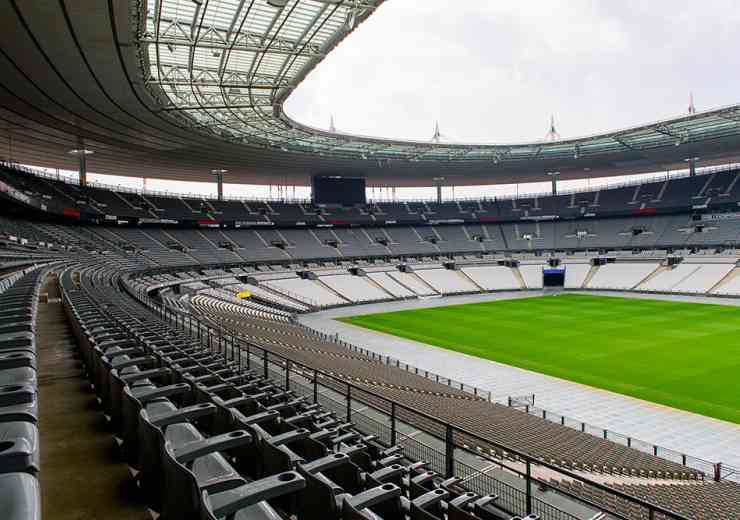
Public safety in crowded places
With UK Security Expo opening its doors at London’s Olympia venue on 30 November, the show organisers reveal best practice advice on how to manage the issue of public security at large events
Sadly the events in Paris and suicide bombing of Brussels airport and Metro have underlined the difficulties of protecting crowds in public spaces. There is certainly a recognition within Europe that more can and should be done at stadiums, transport hubs, venues, shopping centres and other public spaces. So what can the authorities do to dial-up public protection at a time when multiple, marauding attacks – like Brussels, Paris, Tunisia, Mumbai, and 7/7 in London – and, lone wolf incidents such as those visited on Ottawa and Sydney, are very much on an upward trajectory?
Euro 2016
At Euro 2016 – the world’s second-largest football tournament – French Interior Minister, Bernard Cazeneuve offered reassurances following a Council of Ministers’ meeting about ‘strengthened security requirements for the fan zones, for example, by tightening entry controls by means of the systematic frisking of spectators and the use of CCTV in all fan zones’. Beyond this, Cazeneuve went on to confirm that the number of stewards and private security guards had been reviewed upwards. With the failed attempts by suicide bombers to enter the Stade de France last November still fresh in the memory renewed fears over stadium security in France were also raised back in May after flares were smuggled into and set alight at a football game between PSG and Marseille.
City on lock-down
Returning to the action governments took post Paris, the Belgium government shutting down its schools, and even the metro system for close to a week, and having soldiers patrolling the streets, may have had deterrent value, but, practically, is just not sustainable in a Western democracy over an extended period of time. Sadly as we all know, ultimately, these efforts were to no avail as only months later both Brussels International Airport and a Metro station were hit by terrorists on the same day.
For many security experts it is intelligence‑driven raids to arrest and disrupt the activities of suspects, and the sharing of information across borders, that is really at the heart of a proactive anti-terrorism effort to protect public spaces. This is something which Mike O’Neill, MD of UK-based Optimal Risk Management Limited was in agreement on following August’s ‘lone wolf’ incident on a high‑speed train travelling from Amsterdam to Paris. O’Neill was keen to stress that work ‘behind-the-scenes’ by the security services to identify individuals ahead of time is the real game-changer here.
Training for terror
On this side of the English Channel, tackling terrorism remains high on the agenda too. Over six months we have witnessed a series of anti-terrorism exercises – at the Trafford Shopping Centre in Manchester and, further south, the emergency services training in a large warehouse containing a mock-up of the London Underground. The evacuation of the Old Trafford stadium, close to kick-off of the Manchester United and Bournemouth match, after a suspicious device was found by a member of the public in a toilet block, also brought the potential dangers of international terrorism to the public’s attention. Thankfully in this case it turned out to be a practice device left, accidentally, by a private security firm.
Given the large loss of life at the Bataclan theatre, in particular, it is clear that when the worst happens, time is definitely of the essence. London’s Metropolitan Police invited the media to a terrorism training exercise for insight into the tactics that officers would employ, given the reality that today’s terrorists are not necessarily looking to negotiate their way out of a siege-type situation but rather will keep on killing those around them. The Metropolitan Police’s assistant commissioner, Patricia Gallan – who is Scotland Yard’s head of specialist crime and operations – told the BBC that officers would ‘go forward’ to confront gunmen in the event of a Paris-style attack which may mean having to ‘walk over casualties’.
The public also has a role to play in keeping themselves and others safe, whether that is remaining vigilant for suspicious activity or educating themselves about what to do in the event of an attack where they may need to seek safety before the police can reach them. Interestingly, the National Counter Terrorism Policing in the UK has released a film detailing specific advice entitled: ‘Stay Safe: Firearms and Weapons Attack’. This sets out three key steps, under headings: ‘run, hide, and tell’.
Evacuation
Post-Paris, Lee Doddridge, director at security consultancy Covenant, believes that those responsible for major facilities should revisit action plans should they find themselves in the firing line. He reveals that when scenarios are brought up many people may want to evacuate inside a site like a shopping centre – and do a dynamic lockdown. But, according to Doddridge, that doesn’t necessarily work if the terrorists are already in your facility. Instead it is advisable to get people away as quickly as you can.
Added to this, Doddridge explains that employees need to change their mind-set compared to what is the norm in a less threatening situation.
He said: “It is amazing when we run through [a terrorist attack] people say we can’t use that entry/exit because it is staff only but then you make them realise in this life or death situation these things go out the window.”
Situational awareness
When there is the potential for incidents to escalate where crowds may be gathered simultaneously, stretching resources, a smarter joined-up approach to real-time situational awareness could, potentially, help the authorities get a handle on what is happening. Some may look to replicate the route taken by Rio de Janeiro, and the Operations Centre (ROC) there. Although not instituted to deal with terrorism specifically, the facility at Cidade Nova brings together 30 departments and agencies from across the municipality, and, in so doing, has helped slash response times by an impressive 25-30 per cent. As a result of advanced urban systems for visualisation, monitoring, and analysis, the Centre is breaking down the barriers which have constrained the way things function, not just in South America, but globally.
Adding analytics
Turning to Rustom Kanga, CEO of iOmniscient which specialises in video analytics, he confirms that the company has supplied a solution to the Royal Thai Police to automate their policing efforts following the devastating bomb attack on the Erawan Shrine near the Hyatt Hotel in Bangkok last summer that left 12 people dead and 125 injured. In light of what happened, Kanga reports that the Thai police were keen to upgrade their existing systems by implementing a face recognition solution, to make Bangkok a ‘smart city’. The Royal Thai Police already has an Oracle database of faces of people of interest so, reports Kanga, the iOmniscient system is the first step, in the process of automating how this resource is used.
Focusing on pinch points
On the question of the application of video analytics to pick out individuals in crowds, Bill Flind, chief executive at Ipsotek, offers a note of caution: “There is a desire to use facial recognition in crowded places but you can’t just look into a crowd and accurately do face recognition – you need to apply that kind of security to pinch points. So rather than looking at the area as a whole you would deploy the face recognition to work where people are entering.”
For safety in very large venues where thousands people are gathering, Flind adds that video analytics-based solutions can readily help to monitor the overall density of the crowd and raise alerts for particular areas. Of course it is not just access to publicly‑owned video surveillance and other security assets that can help with situational awareness. Andrew Elvish at Genetec points out that a ‘federation’ capability such as that unlocked through a ‘unified security platform’ makes sense for cities. This means, essentially, that cameras from a sports stadium or other sites in a city can be tied into a real-time crime centre run by the police. For example, Elvish warns that in the event of an unpredictable situation like Paris the police and first responders can get eyes on that venue very quickly.
Stand-off screening
The ability to conduct stand-off screening of individuals for concealed object detection in busy public spaces, such as train stations or an airport, is something which Mark Marriage of Digital Barriers believes is likely to gain more traction. He explains that this employs not only CCTV but also a terahertz camera to receive and interpret the natural terahertz energy emitted by individuals and the surrounding environment.
In terms of police involvement in crowd control, rapidly deployable command vehicles equipped with mobile digital CCTV recording technology can act as a powerful ‘force multiplier. Not only can such vehicles mast-mounted cameras provide a highly visible presence to deter trouble but careful positioning of the vehicle helps the police to manage the dynamic of the crowd, keeping rival fans apart and preventing clashes and bottlenecks developing.
Protecting Crowded Places
A Protecting Crowded Places Conference will take place at UK Security Expo 2016 examining innovative design considerations, effective surveillance, target hardening and pioneering policing methodologies. There will also be an Immersive Demonstrator in association with SIDC on behalf of the Home Office and CPNI. Using the event venue itself as the place to be protected, the aim is to provide an integrated experience showing innovative technologies and techniques in operation.
digital issue



















